The Rallarvegen, the Rallar Road or Navvy Road, was constructed in 1904 to provide access for materials and workers arriving by sea, to the mountain-top site of the Oslo to Bergen railway. There are a number of different stretches, but the most famous extends more or less vertically down from Myrdal at the top of the mountain, to Flåm at the bottom.
Myrdal to Flåm
Conway, who had been feeling poorly for most of the trip, was thankfully starting to feel a bit better, so we all disembarked the Oslo-Bergen train at Myrdal, shouldered our back-packs, and began the hike down to sea level.
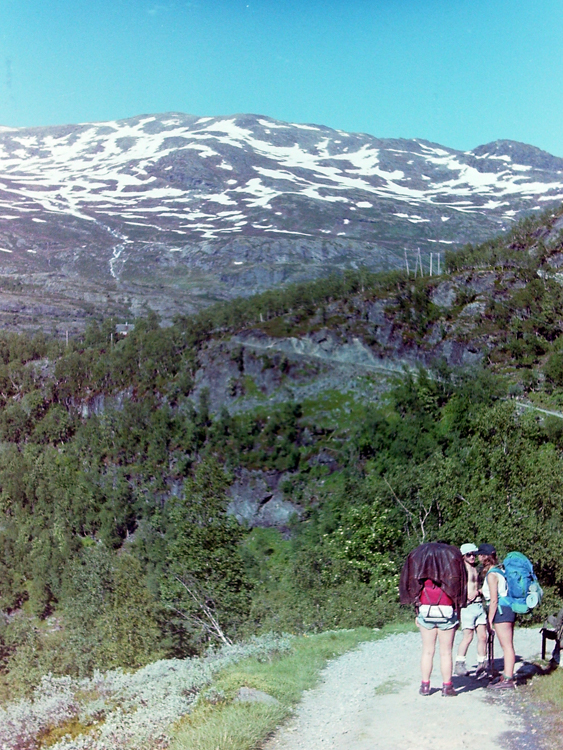
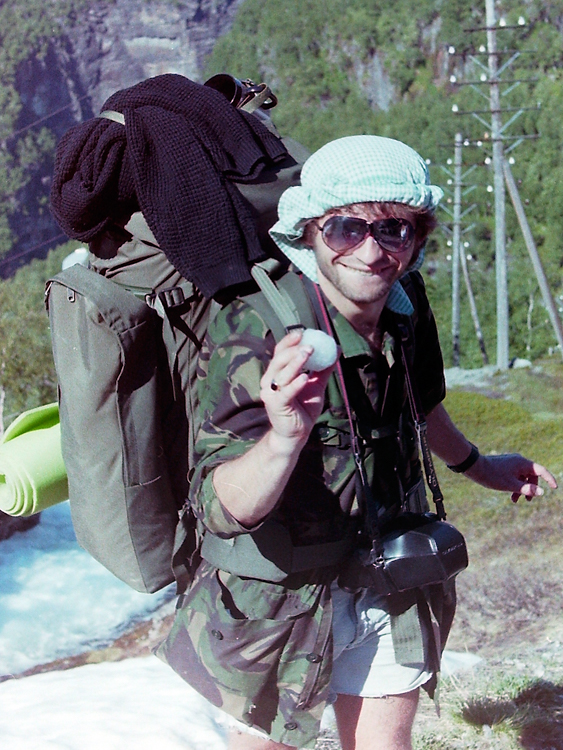
The first part of the switchback descent is very steep, and it immediately became obvious that – whatever else was going to happen – we were not going to run short of water, for there was a new waterfall at every turn.
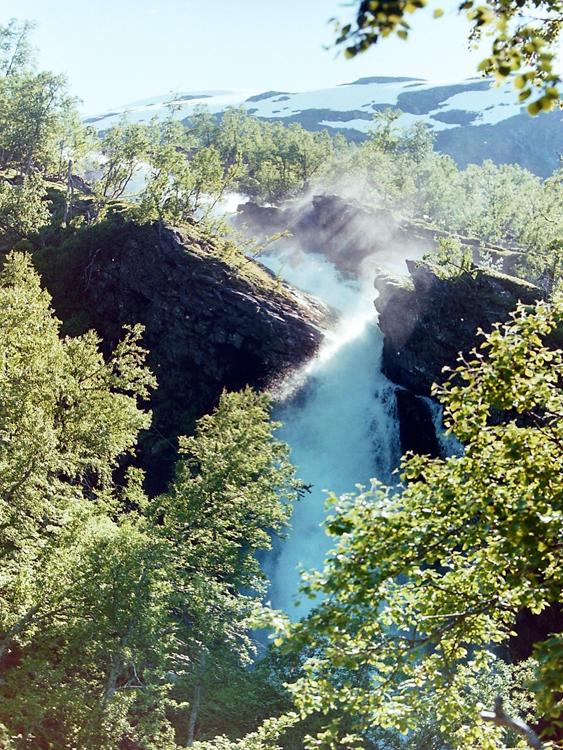
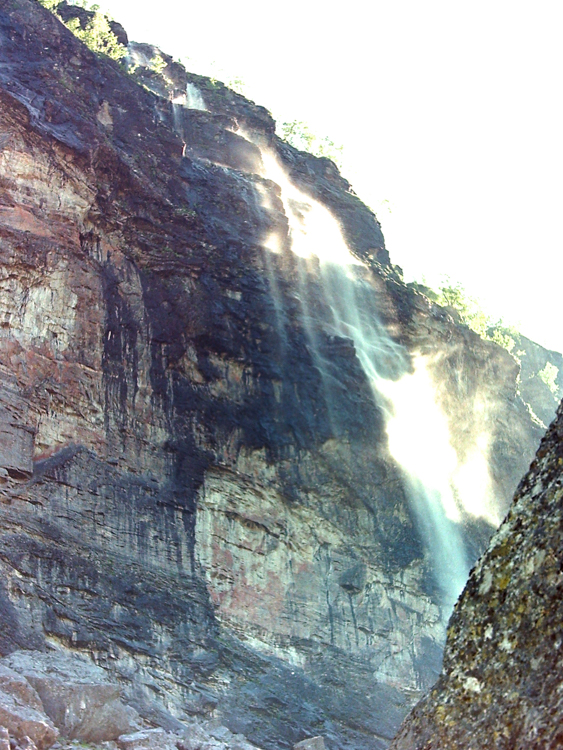
We quickly descended below the snow-line, and found ourselves surrounded by a wonderful variety of wild flowers; monks-hood, fritillary, orchid, white campion, forget-me-not, and several that we could not identify.
The scenery is simply stunning. There are no words to describe the sheer size of the landscape; terms such as ‘enormous’, ‘huge’, ‘vast’, are just too everyday to describe the incredible feeling of immense craggy age and power of the peaks around us.
The fact that trees have found a toe-hold in every nook and cranny adds to the appalling sense of scale. An unadorned rock may be impressive, but it is difficult to appreciate how big it is. Here, you look up, and up, and up, and in the vertical distance you can just make out the tiny little matchsticks of full-sized ash trees perched on the ridge-top.
Every time I looked up, I could feel my heart swell with the magnificence of the view. I noted in my diary that the Romantic artist John Martin must surely have come here for inspiration.
As we descended the Rallar Road, the path became less precipitous, and the waterfalls that had hitherto launched in great rainbow arcs from the sky, became cascading rapids that raged alongside us.
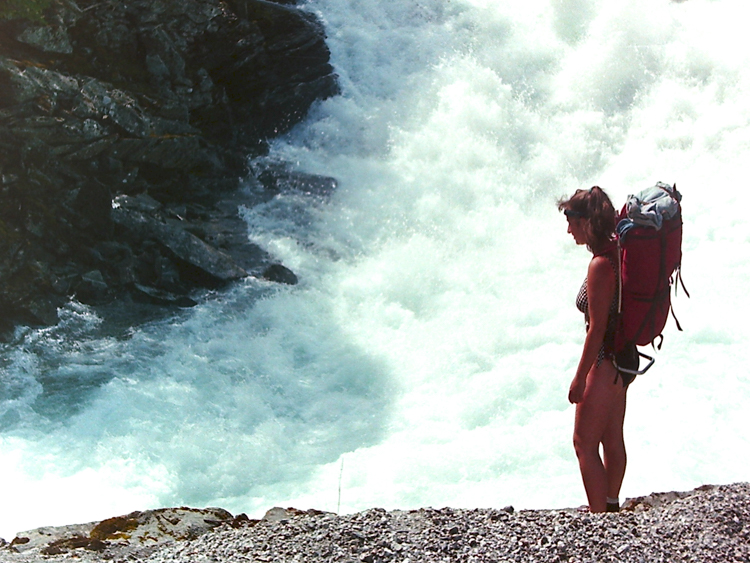
It was by now getting late and a little cold, and the midges were starting to bite, so we put up our tents on a convenient flat spot.
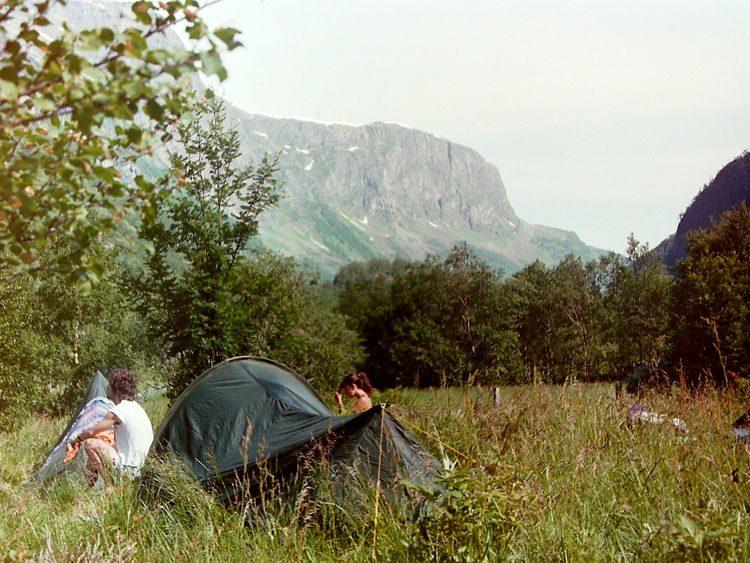
We woke to a world that was dull, cold and grey. It was well into the morning, but the steep sides of the valley kept us in the shadow. Then, suddenly, the sun crested the mountains and the heat hit the tents like a bombshell; we all tumbled out as it was far too hot to stay inside.
I froze my scalp and fingers washing in the nearby meltwater stream, but dried off instantly in the sunshine. We breakfasted on locally sourced “hot fruit soup”, and lazed around while leisurely striking camp. There was no hurry, it was a beautiful place to be.
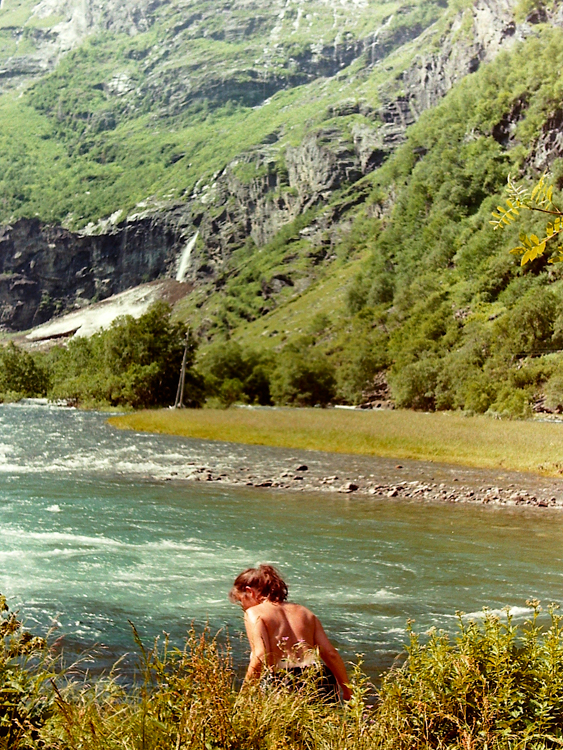
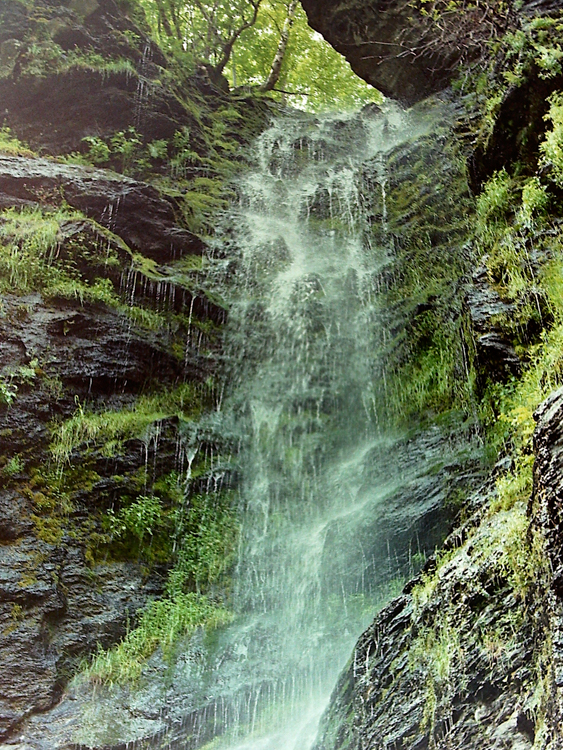
Later in the day, now largely on the level and approaching the town of Old Flam, we had become spread out along the trail as we looked at the scenery and investigated caves behind the waterfalls. Even though the path was reasonably flat, the surrounding landscape was still vertical, but wherever humanly possible, grass had been cut and hung out to dry for winter fodder.
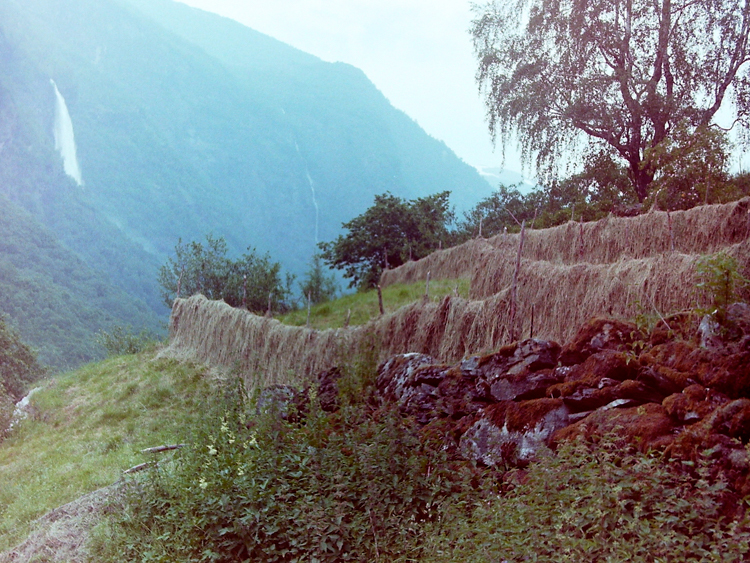
Dave, Conway and Sam found some firewood and lit a fire to cook lunch. Julia encountered a goat, and got involved in a head-butting competition with its kid.
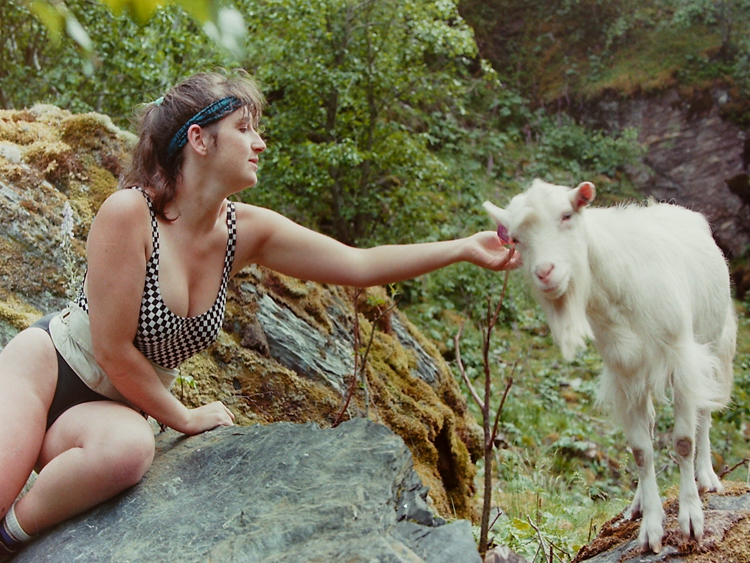
I became fascinated by the water pipeline that now ran along the trail beside us, which was constructed from wood, with about the same diameter as a wine barrel. It leaked dramatically, but I suppose there’s never any chance of running out of water here, and repairs simply involved nailing a plank across the larger holes.
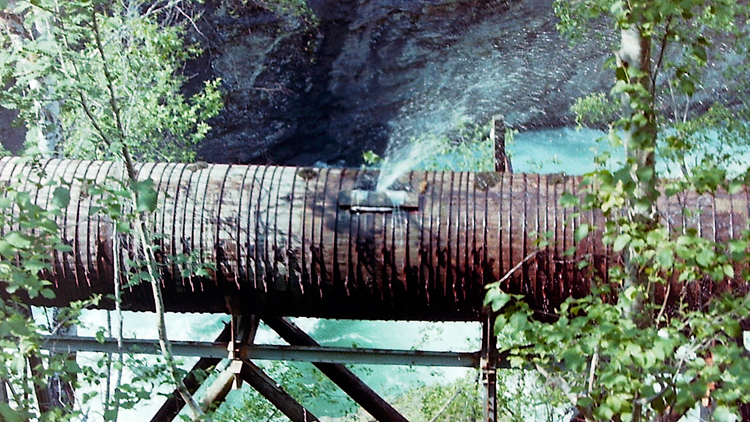
At last, footsore and weary, we arrived in the village of Old Flåm. The town looked exactly as if wandering explorers had hiked up from the fjord, dropped their packs, and erected a church and widely separated houses wherever they fancied the view. It was quite lovely.
We had intended to walk all the way down to Flåm harbour on the fjord, but we were hot and tired, and couldn’t resist resting on the wooden platform by the train tracks at Lunden, a stop for the famous Flåmsbana, the steepest standard-gauge railway in the world. One came past heading in our direction, so we flagged it down and rode it to the Flåm station terminus.
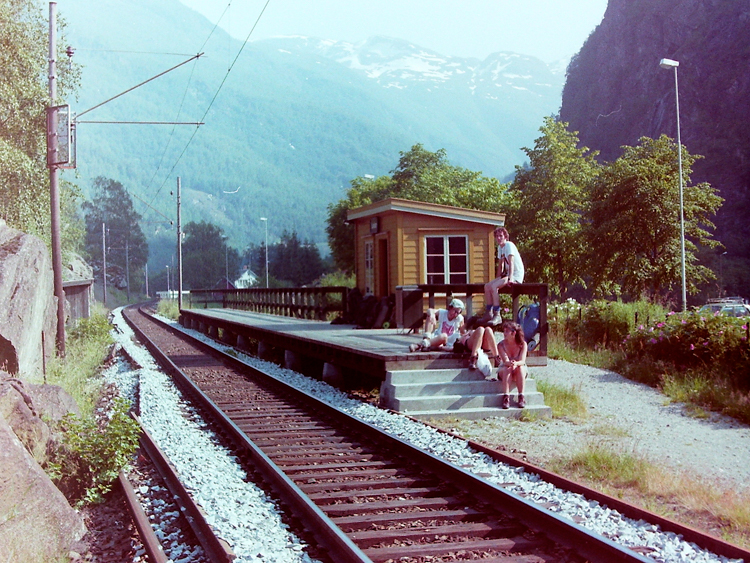
Flåm to Voss
After stocking up on chocolate bars, we rode the Flåmsbana back up to Myrdal. The train doesn’t follow the path of the Rallar Road, instead carving its own route through a series of very impressive tunnels, but it was fascinating to catch the occasional glimpse of the path that we’d taken.
There’s a crowd-pleasing stop near the top, where you can clamber out onto a very wet platform and gape at a waterfall as it thunders underneath the train, and then we were back where we’d started, waiting at Myrdal for the train to Voss.

At Voss, we needed somewhere to stay. There was an official camp site, but for budgetary reasons we needed to free camp, and it quickly became clear that although the town of Voss was nominally small, it is spread out with houses as far as the eye can see; we weren’t going to able to hike out to the edge in any reasonable time frame.
By dint of some judicious clambering through building sites and over fences, we managed to get to a piece of greenery around the back of the official camp site, where we quietly set up camp, planning to leave early next morning in the hope that nobody would notice us.
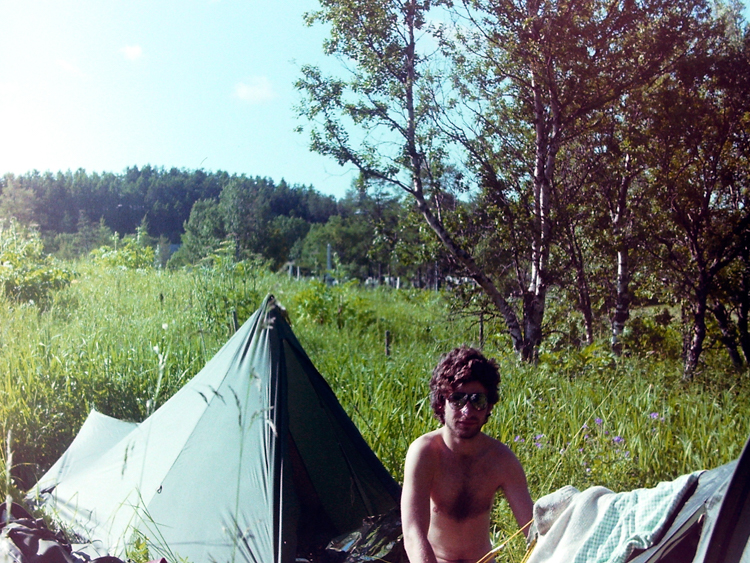
Fantastic xx
I seem to remember a girl by a house on the way down offering us some kittens as well.
Went back to Flam in 2007, the village at the bottom had changed somewhat.
We re-visited in 2011, and stayed in an apartment over the water in Flam. It’s still one of my favourite places in the world. https://www.virtualreinhard.com/wp/flam-valley/